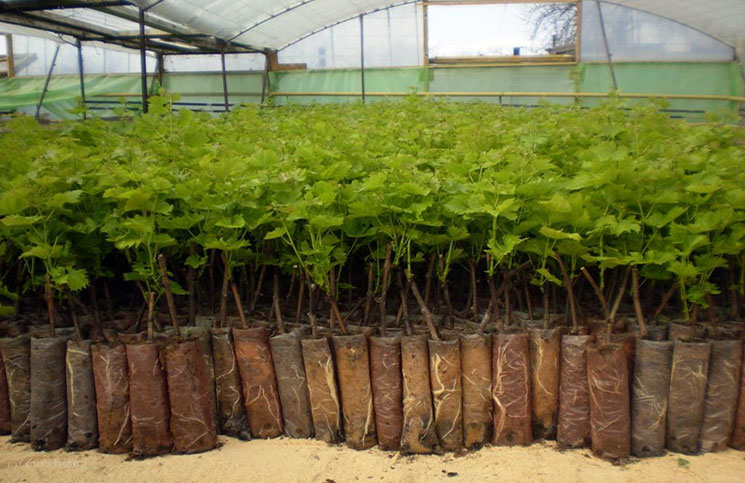 Common methods of propagation of grapes by cuttings and layering allow you to perform work at home without additional costs. Following the rules, it is easy to grow dessert and technical grape varieties. It is best to carry out the procedure when there is no drought and the air temperature does not fluctuate much during the day. Therefore perfect beginning of summer and fall.
Common methods of propagation of grapes by cuttings and layering allow you to perform work at home without additional costs. Following the rules, it is easy to grow dessert and technical grape varieties. It is best to carry out the procedure when there is no drought and the air temperature does not fluctuate much during the day. Therefore perfect beginning of summer and fall.
Content
The difference between the reproduction of grapes layering in summer and autumn
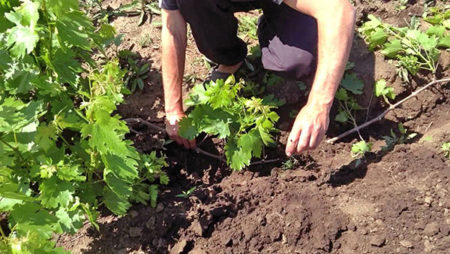 In the summer, there is a greater chance that the vine will take root from the lay. The method involves maintaining soil moisture at an optimal level and complementary foods. Thanks to the stable temperature of the soil, the buds quickly give root.
In the summer, there is a greater chance that the vine will take root from the lay. The method involves maintaining soil moisture at an optimal level and complementary foods. Thanks to the stable temperature of the soil, the buds quickly give root.
In the autumn, it is better to use layering with perennial vines. Autumn is better to carry out seedling planting.
How to propagate grapes with chubuk
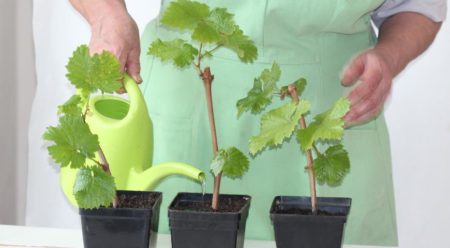 Propagation of grapesand cuttings or chubuki can be carried out in summer or autumn. This is due to the fact that the soil in this period is moist, and the vine is strong and woody.
Propagation of grapesand cuttings or chubuki can be carried out in summer or autumn. This is due to the fact that the soil in this period is moist, and the vine is strong and woody.
A stalk is a cropped vine, on which there are at least 4 buds for rooting a vine. There should not be antennae and leaves on the vine. The lower part of the vine should be cut at an angle. After placed in a solution of iron sulfate, thereby disinfecting against a number of infections.
Features of the autumn preparation of Chubuk
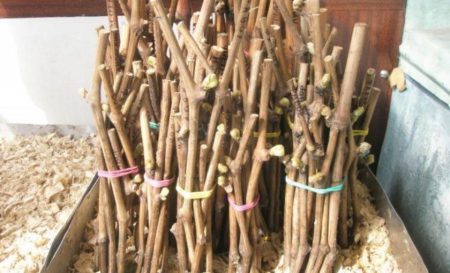 It is better to cut the cuttings before the onset of the first frost. This will allow you to get a good planting material with an optimal set of nutrients. Vines can be stored in the refrigerator and in the cellar. As an option, the branches are dug into the ground.
It is better to cut the cuttings before the onset of the first frost. This will allow you to get a good planting material with an optimal set of nutrients. Vines can be stored in the refrigerator and in the cellar. As an option, the branches are dug into the ground.
Tips for storing Chubuk:
- Small ligaments worth storing in dense plastic bags or divided into half plastic bottles.
- On the package, make a record of the grape variety.
- Keep planting material in a well-ventilated area.
- Water 1-2 times every 48 hours.
- Monitor the temperature so that it is not too hot and the kidneys do not form prematurely.
Green grapes propagation in summer
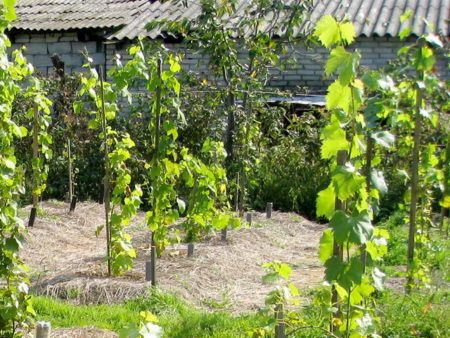 The procedure should be carried out in early June. Planting material must be prepared in the evening. Small pieces of vine to break off manually. Put the resulting branches in water and cover with a damp cloth.
The procedure should be carried out in early June. Planting material must be prepared in the evening. Small pieces of vine to break off manually. Put the resulting branches in water and cover with a damp cloth.
In the morning, cut the cuttings without touching the upper part. Slices on the segments do so that there are 2 buds and 2 leaves. Above the top bud of the vine, leave 1.5 cm. Cut the top sheet in half and remove the bottom.
Planting cuttings put in a solution of heteroauxin in one third. Store 8-10 hours, observing a temperature of 18-22 C under ambient light. Seed blanks in the ground in a deep box, consisting of 10 fertile soil and 5 cm of sand.
Place the cuttings in moistened soil to a depth of 2-3 cm at a distance of 10 cm from each other.After all, cover with polyethylene or opaque glass. Be sure to monitor the soil moisture. Therefore, it is worth 4-5 times a day to spray seedlings from the spray gun, or to water the soil 1 per day
It is possible to temper the petioles for 3-4 weeks, opening the box for 10-15 in the evening. Planting material with roots must be planted in open ground. With sufficient root development, the vine will give an increase of 40-50 cm by autumn.
Methods of rooting grape cuttings
Before planting, the handle must be cut with a knife. If a light “tear” emerges from the incision, then the sprout is healthy. In the case when the liquid is cloudy or not at all, then the planting material is unsuitable for use.
Sawdust rooting
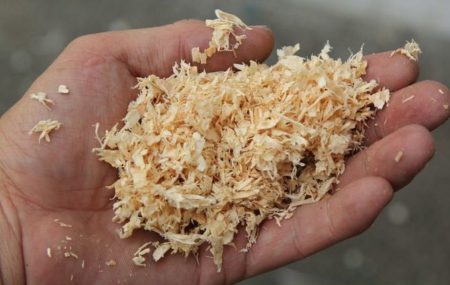 Sawdust and any wood species are suitable for rooting. Pour sawdust into a container of 2-3 buckets of water and pour boiling water over it. Soak until water has completely cooled. Sawdust should be washed and removed from them large shavings and tree bark. After draining all the liquid.
Sawdust and any wood species are suitable for rooting. Pour sawdust into a container of 2-3 buckets of water and pour boiling water over it. Soak until water has completely cooled. Sawdust should be washed and removed from them large shavings and tree bark. After draining all the liquid.
Then fill the plastic bags with sawdust. The layer of wood pulp should be in accordance with the seedlings, while the diameter of the bag is 10-12 cm. Cut the prepared stem at the bottom at an angle under the bud, and at the top 4-5 cm above the bud on the ring.
Place the trimmed planting material in a bag of sawdust so that the pulp envelops the vine along its entire length. Keep everything as follows:
- place boards on the bottom of a large pan;
- on them vertically place bags with sawdust;
- water the seedlings 1 per day with clean water;
- once a week do fertilizing with a solution of fertilizers;
- excess water from the tank must be removed using a tube or syringe.
Rooting in the ground
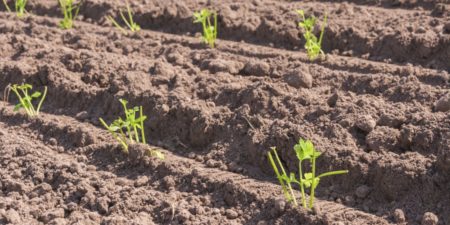 Good chubuki should be soaked for 2 days in clean warm water. After delivering a solution that stimulates the growth of the root system. When small roots appeared on the seedlings, they should be planted.
Good chubuki should be soaked for 2 days in clean warm water. After delivering a solution that stimulates the growth of the root system. When small roots appeared on the seedlings, they should be planted.
This will require a container with a mixture of sand, humus and earth in equal proportions. Insert moistened soil into moistened soil and cover each with a plastic glass. This creates an imitation of greenhouse conditions.
Rooting in water
 Cuttings prepared in the fall should be removed from storage in the second half of March. Update the lower section and immerse the vines in warm water for 24 hours. Pour boiled or purified water 3-4 cm from the bottom of the container into a clean jar.
Cuttings prepared in the fall should be removed from storage in the second half of March. Update the lower section and immerse the vines in warm water for 24 hours. Pour boiled or purified water 3-4 cm from the bottom of the container into a clean jar.
Install chubuki in the water, while it needs to be changed daily. In order that the branch does not rot, it should be washed under running water and carefully cleaned of debris. After the edge of the handle swells and brightens a little, you can increase the water level to 7-8 cm.
Add a few tablets of activated carbon to the water. Top up the fluid as it is consumed by the vine. As soon as the roots become 3 cm in length, they need to be planted in the soil. If this is not done, the roots die due to oxygen deficiency.
How to make grapes
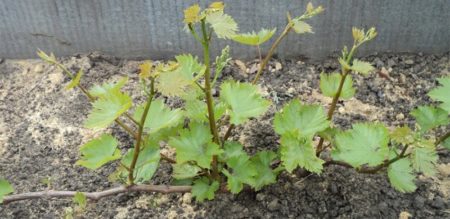 A simple method of propagation of grapes is the method of layering. The method consists in rooting the shoot without separating from the mother bush. There are several options for making layering, they are suitable for different grapes:
A simple method of propagation of grapes is the method of layering. The method consists in rooting the shoot without separating from the mother bush. There are several options for making layering, they are suitable for different grapes:
- The underground method (green layers) involves the use of a young shoot of the current year. The method is suitable for expanding bushes. It is necessary to carry out in the fall after falling of leaves. The vine should be placed in a small hole without cutting from the mother plant. On a branch, leave 3-4 buds immersed in the ground.
- Long-term layering is carried out by the underground method. The method is suitable only for perennial developed branches with several young vines grown in the current season. The branch must be laid in a trench and sprinkled with loose soil. Several layering must be brought to the surface. Trim the shoots so that there are 3-4 kidneys on each, the rest should be removed.As the seedlings will increase by 20 cm, add another layer of earth on top. The soil should be watered to maintain sufficient moisture. By autumn, seedlings should be separated from the mother bush and divided into parts.
- Hilling the bush head (spring method) involves the use of the mother bush as a source of nutrients for future seedlings. At the main plant, the root system is depleted. The method is suitable for varieties with small bushes. It is necessary to carry out a layoff in the early spring. Trim the separated vines at a distance of 1-2 buds. After the seedlings grow by 20-25 cm, they must be dug up with loose soil. The soil should be kept moist so that the roots form. In autumn, sprouted cuttings are cut 15 cm above ground level.
- Short green shoots should be prepared underground from the beginning of summer.
- The air way (air layers) is suitable if there is enough space near the bush. The selected vine needs to be stretched along a wire stretched between the rails, or simply stretched along the ground. When you touch the soil, the branches will take root and take root in a new place. In this case, the fruits and branches from the maternal root system are fed.
- Kataviak, daldrama and lugenda are carried out in late autumn to rejuvenate or restore the bush. Circumcision of bushes worsens its healing, because the vines are wounded. The cataviak method is best suited for bush restoration.
- Breeding with lignified layering requires only one stiff vine, otherwise it repeats the method with perennial vines.
- The Chinese method is used for annual vines in early spring. The young vine is pruned, leaving 8-10 eyes on it. They are placed in a ditch of small depth, while those that protrude to the surface must be cut off. After an increase of 15 cm, the vine needs to be sprinkled with additional earth. With an increase of 40 cm, the soil is fertilized with organic materials. The layer is separated in late autumn and is divided into seedlings.
Planting seedlings in open ground
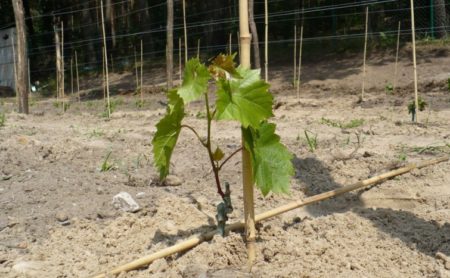 Planting cuttings in the soil is better in the fall, when the first leaves appeared on the vine. The procedure is carried out in several stages:
Planting cuttings in the soil is better in the fall, when the first leaves appeared on the vine. The procedure is carried out in several stages:
- Dig a hole 40-60 cm deep on a land plot.
- Place fertilizers in a hole and fill with water.
- Make two holes at the bottom of the pit at a distance of 20 cm.
- Place 1 seedling in the holes in such a way that the kidney is directed towards the row.
- Fill the pit with loose soil, closing the cuttingsby tamping the ground a little.
Reviews of winegrowers
Maria, 59 years old, Arkhangelsk
I use the Cherenkov method. I prepare Chubuki in the summer and immediately put them in the soil. About 50% of the branches give root and become suitable for planting seedlings. Watering in my garden is drip, so the moisture in the soil was maintained at an optimal level.
Oleg Petrovich, 47 years old, Rostov-on-Don
For propagation of grapes, I use the method of cuttings, and for updating the bushes I prefer the method of layering, it does not injure the mother bush. The method gives a guaranteed result of obtaining a seedling.
Without special skills, you can propagate the grapes yourself at home. If you follow simple rules using the methods of cuttings and layering, you can update the bushes or increase their number.




 Non-covering winter-hardy grape varieties for Moscow region
Non-covering winter-hardy grape varieties for Moscow region How to keep the vine in winter
How to keep the vine in winter When can I transfer grapes to another place in the fall
When can I transfer grapes to another place in the fall How to cover and prepare grapes for the winter in the suburbs
How to cover and prepare grapes for the winter in the suburbs